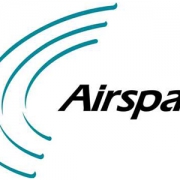Next Task Order: Flying Robots
Or more precisely, swarming micro air vehicles, to create a communications cloud where infrastructure is destroyed during an emergency like an earthquake. SciDev reports on a Swiss innovation that hovers at the extreme end of ICT4D – at least for now. Flying robots could help in disaster rescue – SciDev.Net.
But the same team also produced the awesome SenseFly drone, which costs around 9K and fits in a briefcase. The possibilities for monitoring and mapping for biodiversity and agriculture appear to be endless. Check out the video.
Lest you think I’m a shill for the Lausanne techies, let me take the opportunity to draw your attention to some homebrew options. These won’t create the swarming communications cloud suitable for a major disaster, but a lot can happen.
Grassroots Mapping is a network of technology hackers that use balloon and kite mounted digital cameras in mapping, to serve as “community satellites” – a low cost remote sensing alternative to satellite imagery that can get surprisingly good results. Significantly, the technology is affordable and can be put in the hands of communities for participatory planning, independent monitoring, and access to information – key aspects of our quest for good governance. The Public Laboratory for Open Technology and Science is a sister initiative working to develop new technologies for grassroots mappers.
I’ve mentioned Participatory GIS – the use of GIS in community mapping – in earlier posts. PPGIS is a virtual network online consisting of resources and a very active email list to support a peer-to-peer learning network spanning the globe.
So there you have it – we started with a drone swarm and ended up with a kite. The needs of tomorrow (and today) will be well served by one or the other.
As the wise one said, knowledge is knowing that the tomato is a fruit. Wisdom is knowing not to put it in a fruit salad.





































